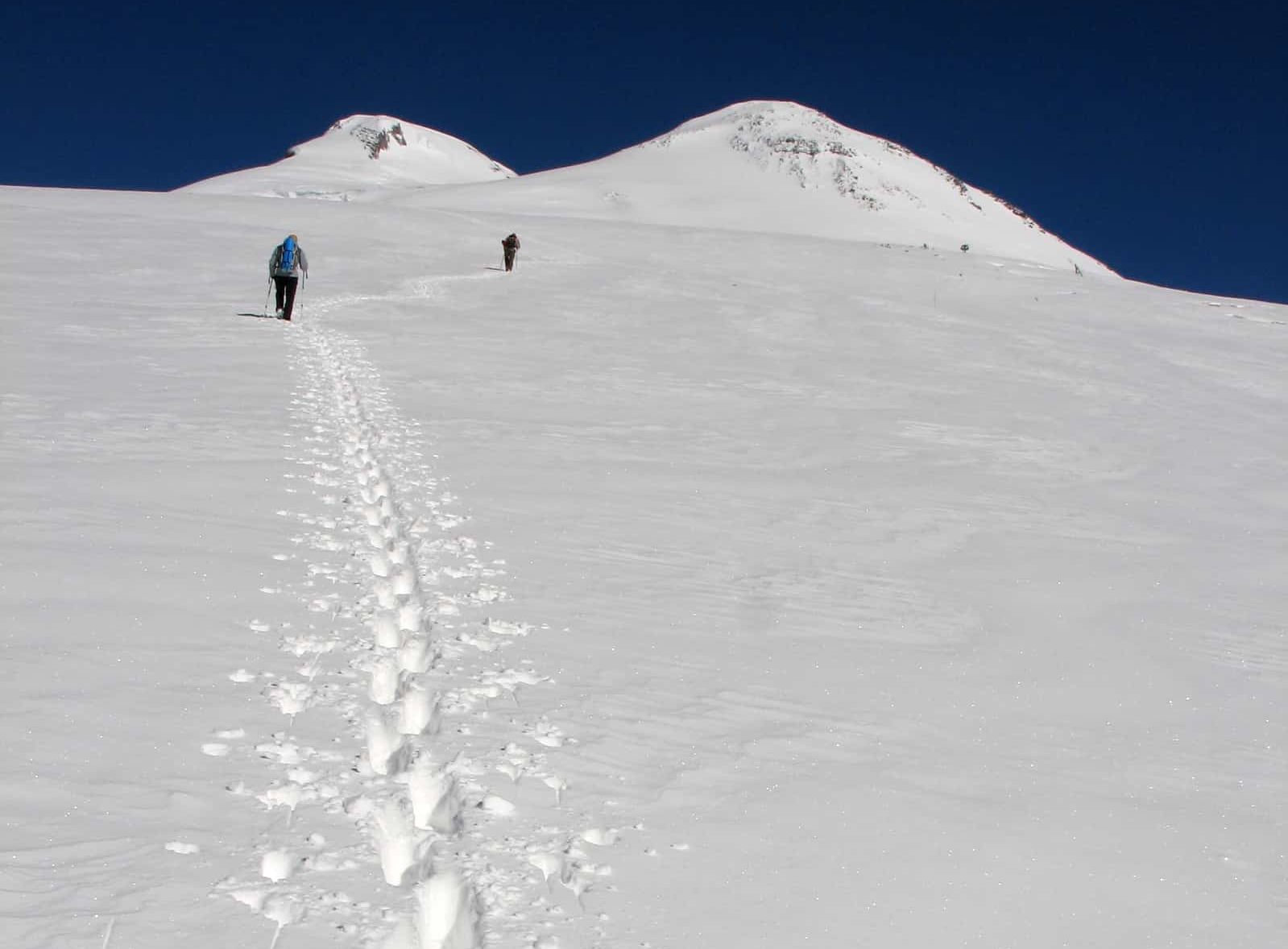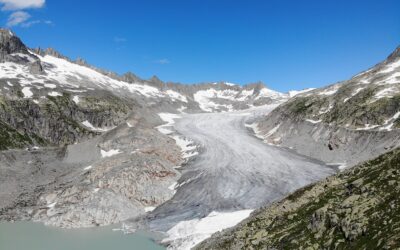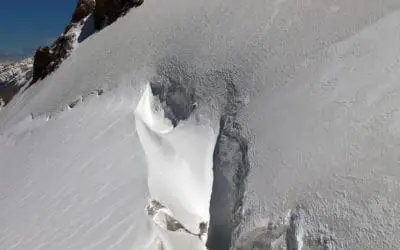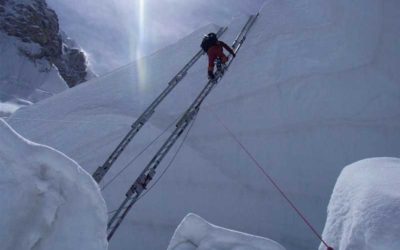
You’re heading to some awesome back country ice climbing crags for the day. The prize if awesome: pristine ice climbing routes that just waiting to be completed. The route there is tough, though. You’ll have to plough through deep, powdery snow in order to get there, or you must ski, which is obviously much quicker and takes less energy than digging a deep trench with your legs on the way there.
So, do you pack an extra pair of mountaineering boots in your already astronomical pack, or do you just climb in your ski boots?
There are some major differences between mountaineering boots and ski boots that could be deal breakers for you, or might not bother you at all. The main differences are that ski boots are stiffer, more restrictive, gives a forward-leaning position, not always compatible with crampons, more lightweight and more suitable for shorter and less technical climbs where less packing is appreciated.
Some climbers opt to use a multi-purpose boot that they can strap to their skis. Others just climb in their ski boots, while others insist on packing proper climbing boots in their pack.
In this article, I’ll take a detailed look at the differences between climbing and ski boots along with the pros and cons of climbing in ski boots to help you decide which option suits you best.
Climbing Boots vs. Ski Boots
Climbing boots and ski boots have some major differences. First off, ski boots fit to skis (duh), while not all climbing boots can be attached to skis.
Obviously, climbing boots are not meant to be attached to skis. You do get some fittings that allow some climbing boots to attach to skis – this is by no means a one size fits all solution, so be sure to check it out at the shop before you spend a fortune on a disappointment.
Conversely, ski boots might not be suitable for use with your climbing crampons. You’ll have to check this compatibility before you choose a pair of boots.
Your crampons should be able to fit securely and safely, allowing you freedom of movement on the ice without worrying that your feet will slip out of your crampons. Not a fun thought.
Ski boots tend to be stiff, especially around the ankle. They often also lock your feet in a slightly inclined position. You know, leaning forward as you would while skiing. After all, they’re meant to keep your ankles braced while you slalom like a wild person.
High performance ski boots are the stiffest of them all, which is terrible when you’re climbing. For climbing, you need a supple boot that allows your ankle to move around as you position your feet on the ice.
Skiing boots are often made of durable plastic with soft, synthetic liners.
Climbing boots, on the other hand, tend to be softer, either made from leather or durable synthetics that allow easy ankle movement while locking securely into your technical climbing crampons.
Pros of Climbing in Ski Boots
The most important plus of climbing in ski boots is that you only have to pack one pair of shoes – the ones on your feet.
This means that your pack is lighter, conserving your energy.
You also don’t have to change shoes at the crag, which could be a cold, wet and miserable affair. Here, you minimize the risk of getting your feet wet, which would result in cold icicles for toes, wreaking havoc with your climbing performance.
Ski boots are lighter than climbing boots, making your trip there even easier.
If you’re not doing highly technical routes, the decrease in weight could even give you a bit of a boost, since you’re carrying a bit less with you up the ice.
The Pros of Climbing in Ski Boots can be summarized as:
- Only one pair of shoes are needed
- Your pack is more lightweight – helping you conserve more energy
- The hassle of switching shoes mid-trip is removed
- Ski boots are often lighter than climbing boots
- Makes highly technical climbs easier where every bit of carry-on weight matters
Cons of Climbing in Ski Boots
Ski boots are stiff, which means that you won’t be as supple as you need to be for some routes.
They’re also not always compatible with climbing crampons, so you won’t even be able to climb at all.
If you’re planning on doing some seriously technical climbing, ski boots will hamper you big time. It’s not a good idea for difficult routes.
The range of motion further hampers you when climbing, since they typically lock you in a slightly forward-leaning position.
You can’t point your feet at all and you can’t stand flat-footed. As a result, you could end up with some serious blisters and sore muscles from standing in an awkward position all day.
You could loosen the straps on your boots to give you some range of motion. However, this would cause your feet to flop around in your boots, which is uncomfortable at best, and at worst, could make you clumsy enough to take a tumble.
Loosening your shoes could also let the cold get into your boots, freezing your toes when you have no way to warm them.
The Cons of Climbing in Ski Boots can be summarized as:
- Many ski boots are not compatible with crampons
- Ski boots can be very stiff, making climbing more difficult
- The forward leaning position and restricted range of motion makes them not compatible for very technical climbing
- Not comfortable for longer periods of time
Conclusion
There are many climbers who use ski boots to climb, especially on easier grades. It’s not always the best, though.
Before making the decision to use ski boots to climb in, think about what you want to achieve. If you want to do some hard core climbing and send some crazy routes, it’s well worth packing that extra pair of boots.
If you’re just starting out and really only want to have a fun day out with friends, using some basic ski boots to climb is probably all you need. Happy adventures!
Written by Felix
May 16, 2019

About me
Hi! I’m Felix. When I’m not spending time out in the mountains, I like to write about my hobbies. That is how Mountain Homies was created. On this site, I try to gather all the juicy information about Mountaineering that I have learned since I started. Happy adventures!
Recent Posts
The 10 Largest Glaciers In The World (Length, Location & More)
In this article, we’ll have a look at the ten most massive glaciers in the world (by length, not area). Some of these are accessible for hiking and climbing, while others are not…
3 Ways to Spot and Reveal a Crevasse (And Avoid It)
So, how do you spot a crevasse and – more importantly – avoid falling into one? In this article, I will have a look at what crevasses are and how to detect them…
5 Ways of Knowing If Your Climbing Shoes Are Too Big
It has almost become a prestige among climbers to be able to boast about how small and tight climbing shoes can be used. There is therefore a lot of talk…
Related Articles
3 Ways to Spot and Reveal a Crevasse (And Avoid It)
So, how do you spot a crevasse and – more importantly – avoid falling into one? In this article, I will have a look at what crevasses are and how to detect them…
5 Ways of Knowing If Your Climbing Shoes Are Too Big
It has almost become a prestige among climbers to be able to boast about how small and tight climbing shoes can be used. There is therefore a lot of talk…
3 Clever Ways of Crossing A Crevasse
When you’re mountaineering in snow country, you will undoubtedly encounter some crevasses. These are scary, since you don’t always spot them…
Stay Up to Date With The Latest News & Updates
Join Our Newsletter
The owner of this site is a participant in the Amazon Services LLC Associates Program, an affiliate advertising program designed to provide a means for sites to earn advertising fees by advertising and linking to amazon.com.





